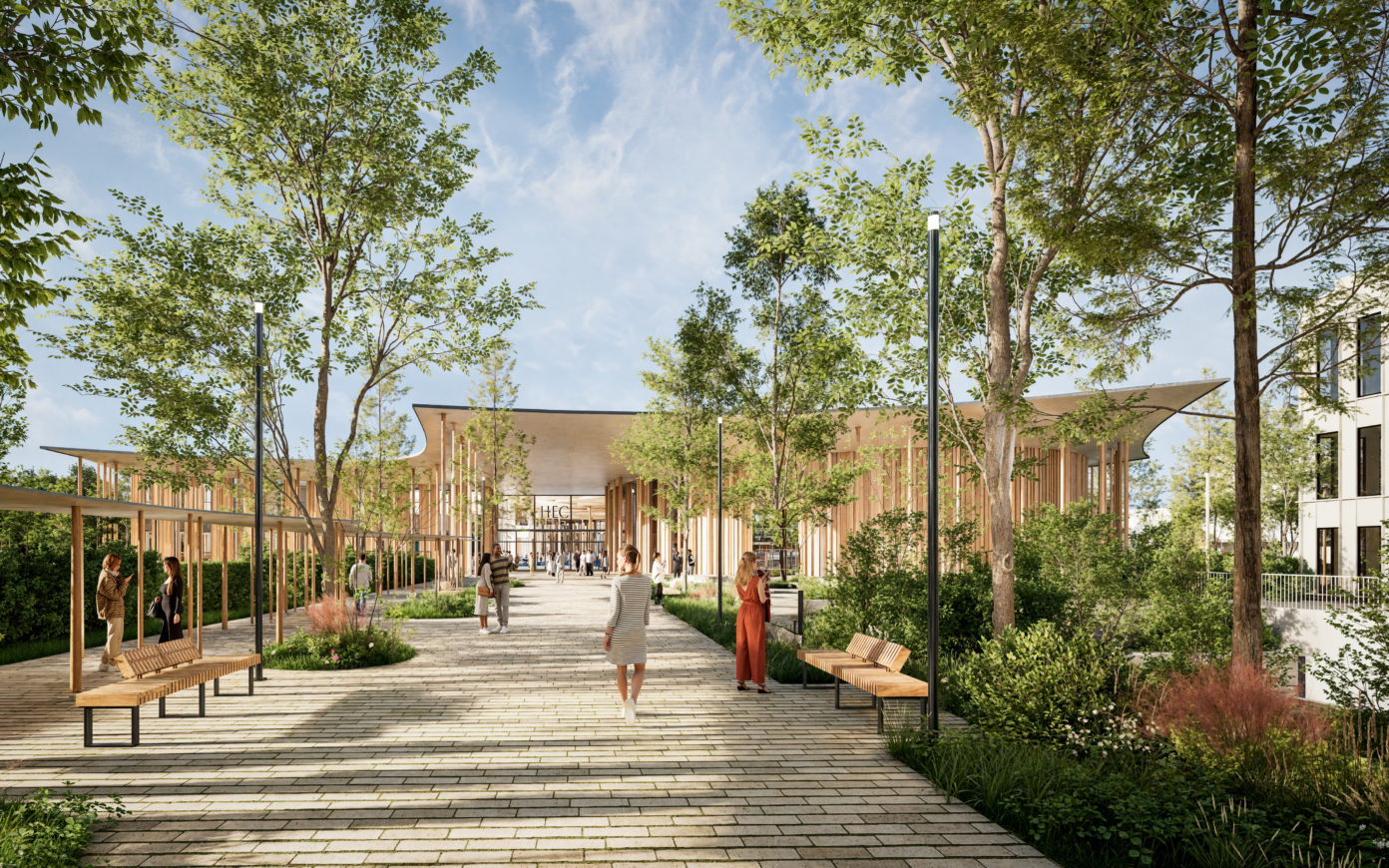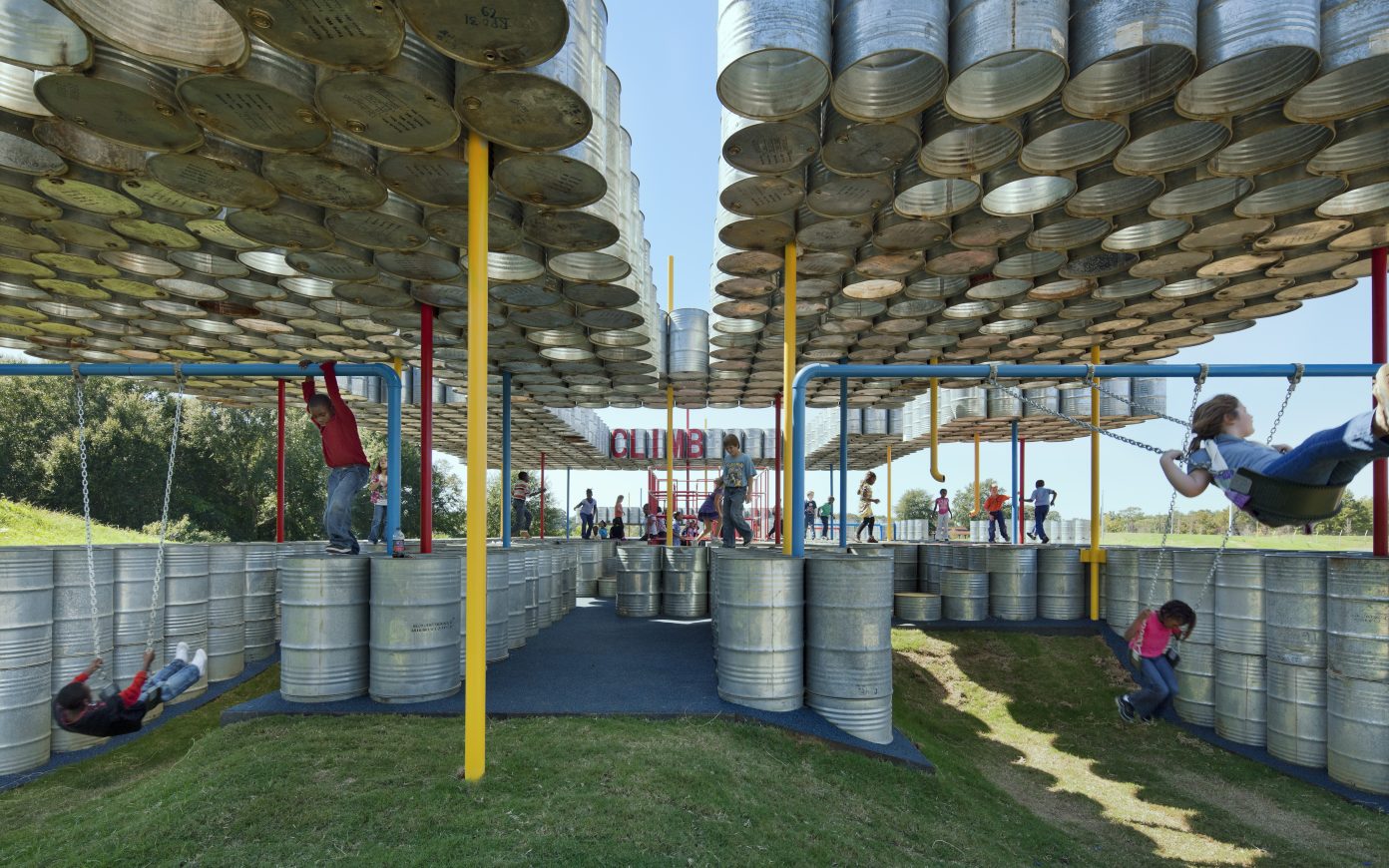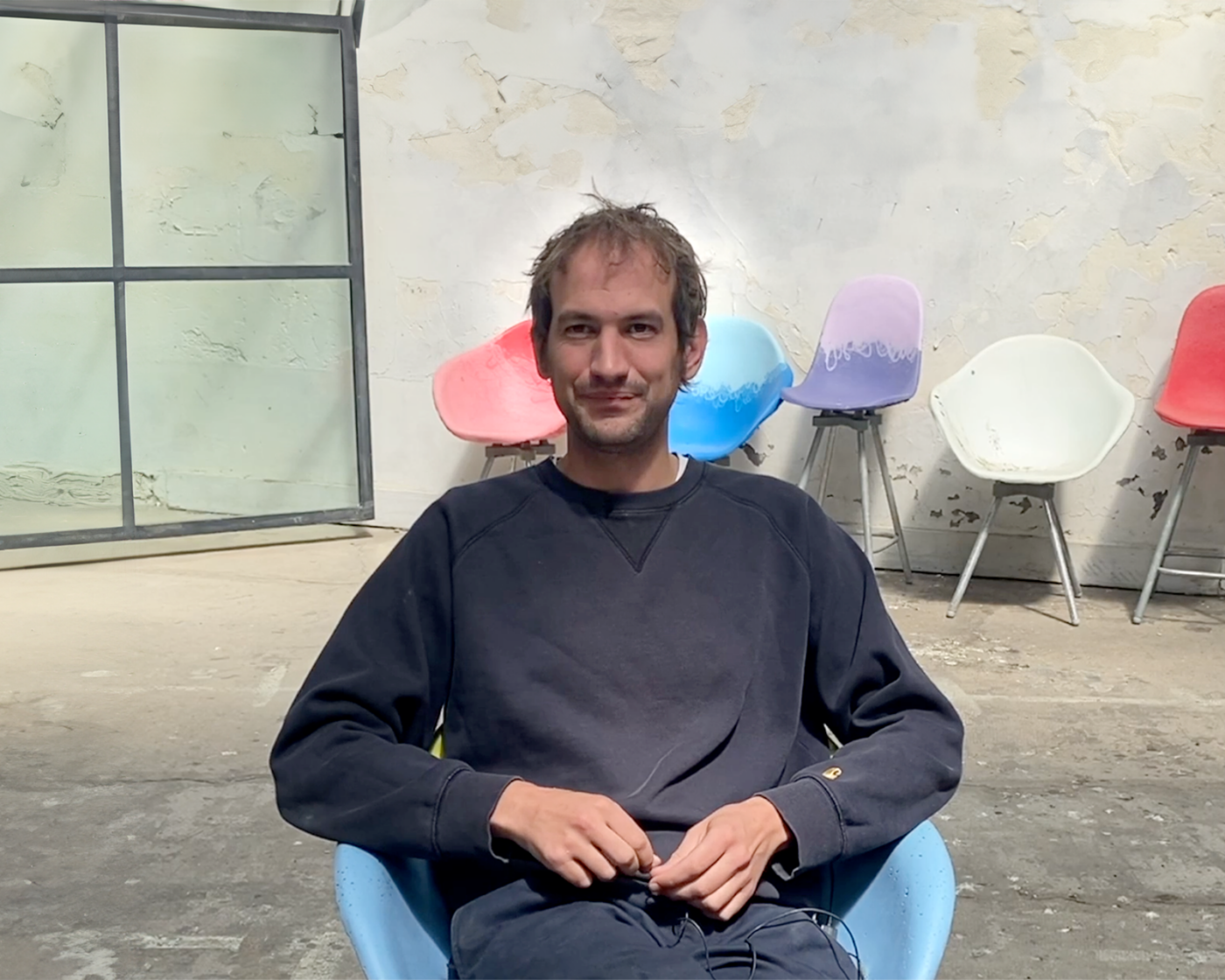Nestled in the heart of the Bièvre Valley, the HEC campus embodies the living archive of modern tensions between nature and knowledge, heritage and forward-thinking. In a world undergoing transition, the school chooses to revisit this exceptional environment and integrate it into a sustainable, inclusive, and ambitious strategy. PCA-STREAM proposes a project that is both contextual and transformative: restoring coherence to a fragmented domain, reactivating landscape and social continuities, and creating a new embodied centrality : the Campus Heart, to give form to the HEC of the 21st century. A place of learning in and with the landscape. A campus aligned with its time.
Housing
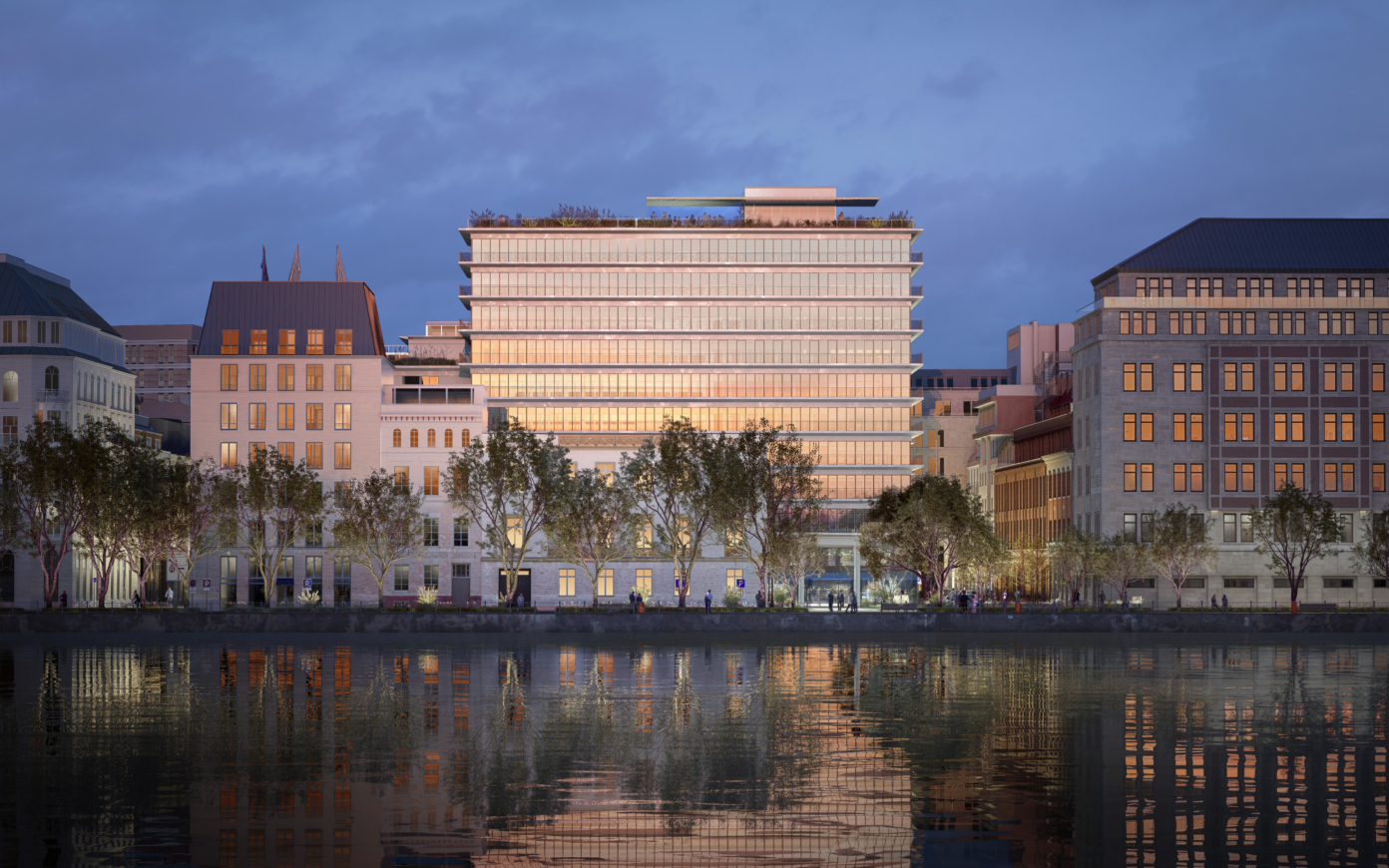
The historic Berenberg Bank building is about to be reborn. Through a contemporary reinterpretation that enhances its architectural legacy, the project breathes new life into a Hamburg icon, transforming its base into vibrant, open, and multifunctional spaces.
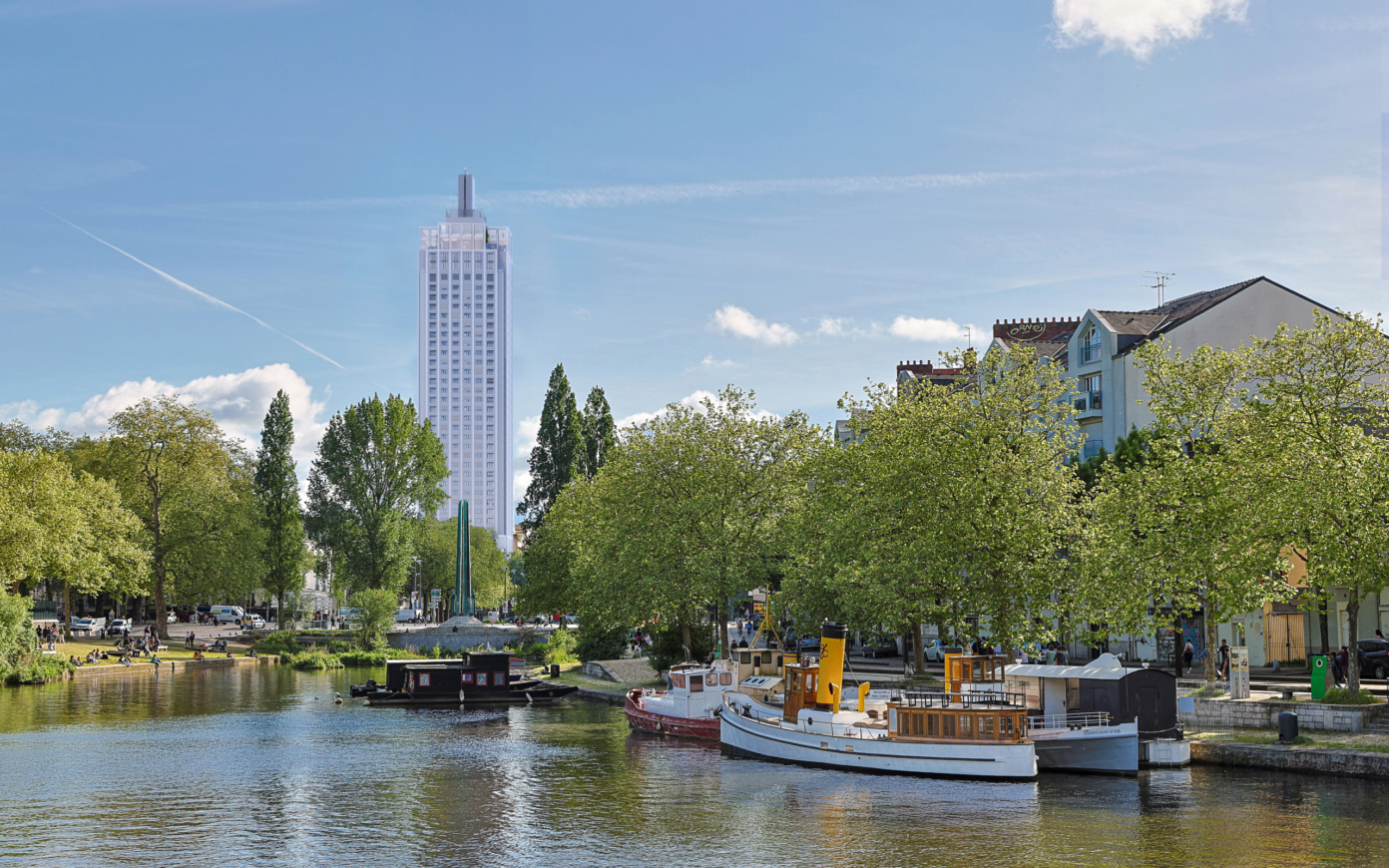
The new Tour Bretagne, a renovation of the emblematic Nantes landmark, offers an opportunity to transform a symbol of the postwar boom, now obsolete, by adapting it to the challenges of our time. The PCA-STREAM – MAGNUM team enhances its elegance and slenderness by converting office spaces into housing, making the project a forerunner of a new era for the city and the metropolis.

As part of the Eurodisney development zone, PCA-STREAM is designing a mixed-use, open-plan tertiary campus, co-designed with its user, Crédit Agricole Brie-Picardie. It embodies the traditional values of this bank, its environmental, social and cultural commitments, but also its commitment to the uses of tomorrow.


At the heart of the 7th district of Paris, PCA-STREAM has transformed what was formerly a bland and common office building into an exceptional town house. The existing building has had its interior restructured so as to provide natural light, while the facades now possess a contemporary identity through a geometrisation of its volumes.


In 2000 PCA-STREAM transformed a former tinplate stamping factory in Belleville, Paris 20e, into a residential loft. Taking advantage of the initial depth of the space, the existing wooden structure has been preserved and the space gutted so as to insert sequences of life around a luminous patio that also provides an interior garden.
Explorer Toutes les typologies
 stream voices
stream voices
Eager to share more generously the results of its collaborations and research, PCA-STREAM publishes STREAM VOICES, its online magazine!
